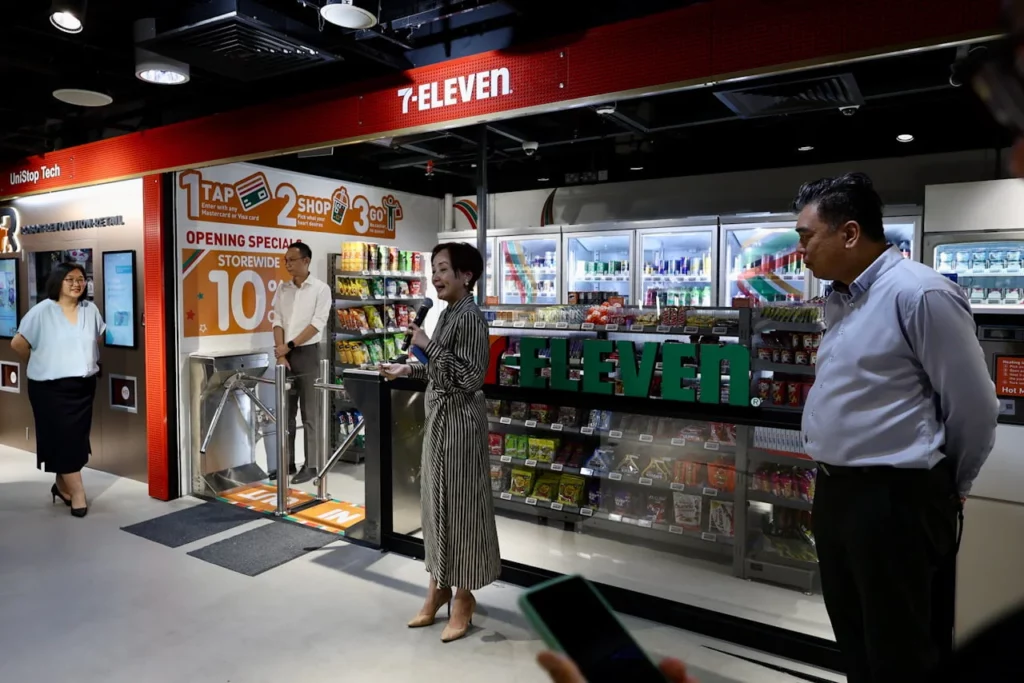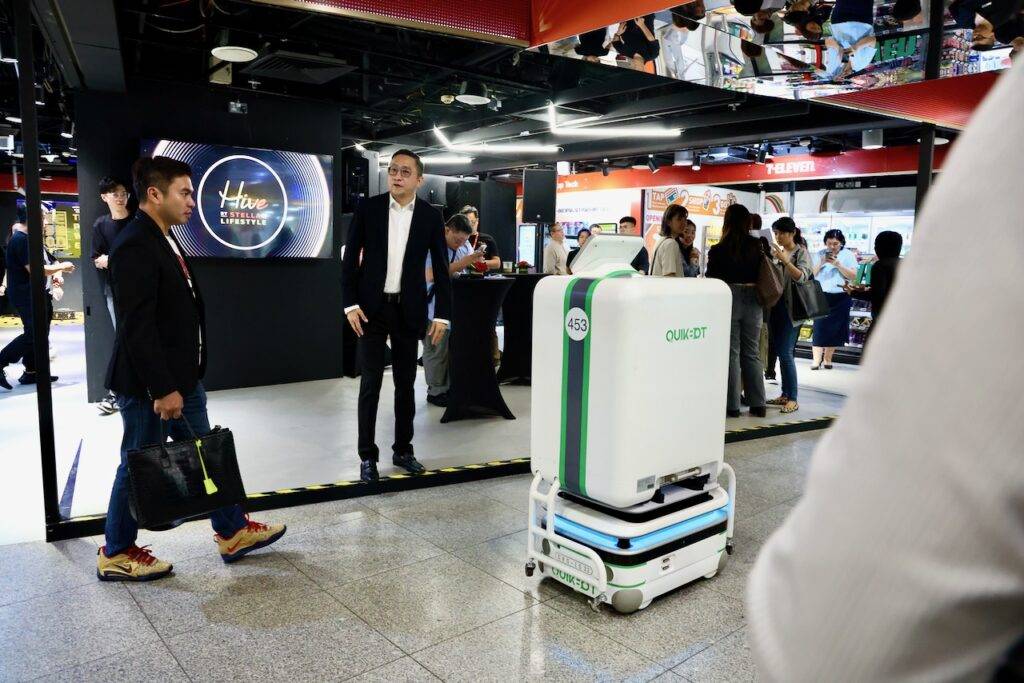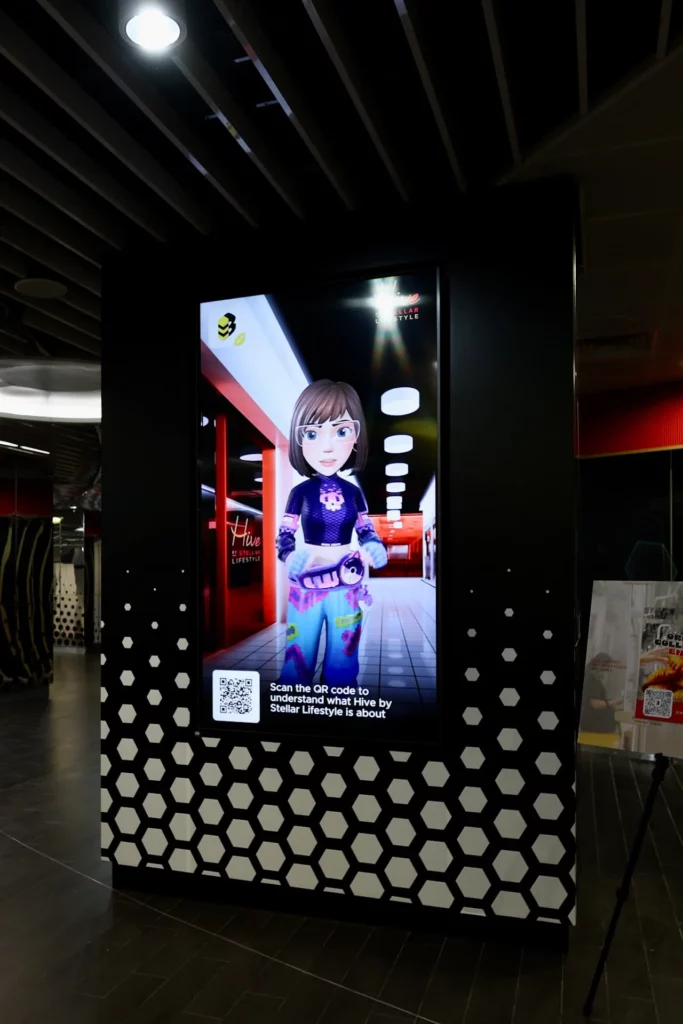Welcome to Hive 2.0, the epitome of retail innovation located at Esplanade Xchange, Singapore. This high-tech hub is designed to revolutionize your shopping experience with cutting-edge technology and automation.
“Perhaps one day, all MRT retail stores in and around stations will be like this“
written by Justin Choo

Whenever someone says, ‘This is the future of X’, ‘This will revolutionise Y’, or the all-time favourite, ‘3D is the future of entertainment’, you usually brace yourself for an unscheduled enema shot of jargonspiel. So, for those among us who have heard these pitches for the umpteenth time, it’s fair to assume that Hive 2.0 is just another one of those overhyped ideas that won’t amount to anything. However, while I’m not qualified to give an opinion on the business side of things, I’m convinced that, conceptually, Hive 2.0 seems pretty sound and could be groundbreaking if it takes off.
Located underground between Esplanade station exits of Suntec City and South Beach Tower, Hive 2.0 — officially Hive by Stellar Lifestyle — is an innovation hub featuring a collection of startups, SMEs and one familiar household name. Stellar Lifestyle is the business arm of SMRT (comprising retail spaces and advertising) that generates income to supplement the rail business. So, it’s in the company’s interest to improve its retail spaces, which partially explains this innovation hub.
We’re told that part of the reason Hive was developed was to come up with solutions addressing pain points for its tenants, such as rising labour costs and workforce shortages, along with finding new ways to make retail spaces more engaging for commuters and the local community around the station.

QuikBot markets itself as a platform because that’s where all the hard work is. Robots aren’t new, and the idea of robot deliveries is yesterday’s news. But implementing them in a new environment isn’t fun. Upgrading the infrastructure with hardware aside, you must develop middleware that connects two seemingly unrelated devices and allows them to communicate. This is how the delivery robots can call for the lift or open up security gantries without human intervention. There’s also the most painful bit of dealing with people and convincing them to play ball — what good is having the technology when, say, the building owners refuse to integrate their infrastructure into the framework?
That said, you should check out the QuikBot if you’re in the area. During the demo, it looked as if it had been set up to fail — human traffic that kept putting it off and pushed it into a corner; a baptism of pouring rain; a rather trolly, tall speed bump that looked like it was meant to stop trolleys — yet the robot courier navigated them all with ease, albeit languidly. Basically, it works.
QuikBot’s collaborator, 7-Eleven, also has a milestone to show off. Shop & Go is 7-Eleven’s first autonomous retail store. It’s the same store we all know, except the cashier is conspicuously absent. You simply tap your credit or debit card, take any item you want (or put it back when you don’t) and walk out. There’s no need for an app or to scan QR codes. I’m told that the cameras in the store can capture all your movements and interactions and work out what you ultimately purchase automatically. Surely, there must be some limit to what the system can track, I pondered, but the response was pretty emphatic: it should work flawlessly.

New Experiences
The Gym Pod is the concept of turning small spaces into self-contained gymnasiums you book on demand. It is fully automated, except when it’s being cleaned, and offers privacy on top of it. And since it’s automated, you can pretty much go at any time you wish. IncuBaker Kitchen at Hive is actually the Incubaker’s studio for hosting events and (eventually when they get the license) food preparation, so you can expect to see pop-ups and interesting concepts there every time you pass by. While only the demo version of JAVIS, the robot boba barista, was available at launch, it’s a concept that’s already in use in countries like Korea and should likely catch on if managed properly.
Other concepts include BuzzAR, which is an AI avatar guide that will interact with visitors and show them around the space; Tap Tiles is a concept of converting footsteps into energy; and LunchBox, a turnkey service provider that offers not only an easy point of sales solution for F&B but also an online platform that can potentially allow F&B outlets to place scannable adverts in trains and stations. Interested commuters can simply scan a QR code to order from a station outlet, where they can easily pick it up upon arrival.
The future
Much of Hive’s allure for me is the possibilities that it can bring. As we all know, the harsh reality is that most startups won’t make it through. Hive’s positioning as a communal space to foster collaborations geared towards making retail spaces at MRT stations offer something unique and useful makes a lot of sense. Companies, big or small, get to test their concepts in the real world and refine them or, if necessary, pivot in another direction. QuikBot also participated in the first Hive, and Hive 2.0 marks the point where they finally have a service that can be rolled out. Will it reach a point where we can find more of these hubs at every station, serving last-mile deliveries? That’s probably the fun bit about Hive. And for those rolling their eyes and wanting something tangible now, just pay a visit to Singapore’s most unique and high-tech retail space at Esplanade Xchange.